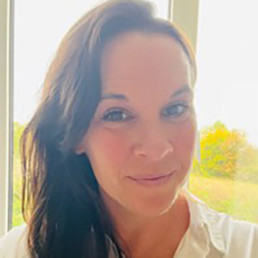Turning Vision into Action: Practical Steps for Building Diverse and Inclusive School Governance

Written by Krystian McInnis
Krystian McInnis is a Religious Education consultant, advisor, and researcher specialising in decolonising and diversifying Religious Education. With a career that spans the public, private, and charity sectors, he brings extensive national and international experience in curriculum diversification and decolonisation. As the Co-Founder of Reimagining Education, Krystian is dedicated to creating a more inclusive and equitable educational system where everyone feels seen, heard, and that they belong.
As I reach the conclusion of this blog series on the importance of diversity in school governance, I feel it paramount to close by exploring the final critical phase for success: action. Having previously discussed the profound impact that diverse governing boards can have on student success, school culture, and community engagement, it’s arguably time to move from theory to practice. With the call for diversity is clear, yet little traction still appearing to be being made, the time has come, for schools and trusts turn blue-sky ideas into concrete, lasting change?
Therefore, this final blog will outline practical next steps that educational leaders, school boards, and trustees can take to ensure their governance structures are diverse, inclusive, and reflective of the communities they serve.
- Commit to a Diversity Strategy with Clear Goals
The first step in creating a diverse governing board is making a clear, intentional commitment to diversity at all levels of governance. For genuine change to come about, it is vital that this commitment be reflected in the school’s action plan, vision and arguably leadership performance objectives too. It’s not enough to express the desire for diversity, it must be woven into the fabric of the school’s governance strategy. Therefore, schools and trusts must ensure they:
- Set measurable diversity goals for their boards, such as increasing representation from underrepresented groups within a set timeframe.
- Establish a diversity working party that includes key stakeholders, such as governors, school leaders, and community representatives, to oversee and implement these goals.
- Publicly commit to diversity through mission statements or diversity pledges, making it a visible priority for all members of the school or trust.
- Implement Inclusive Recruitment Practices
To diversify school governing boards, schools and trusts must rethink their recruitment processes. Traditional recruitment methods often result in boards that reflect the status quo, typically lacking in diversity, with remarks of ‘we have always done it this way’, far too commonly used. By changing how boards recruit members, schools can ensure that they attract a wider range of candidates with varied experiences and backgrounds. In practice, the necessary steps should include:
- Actively reaching out to underrepresented communities through outreach campaigns, including advertising board positions within the local community, local media, and through social media platforms that engage diverse audiences.
- Creating a skills-based recruitment process that prioritises a broad range of perspectives, ensuring that all candidates are evaluated for their ability to contribute to the school’s overall mission, not just for their professional credentials.
- Partnering with diversity-focused organisations to identify potential board members who can bring new perspectives to governance.
- Provide Tailored Training and Support for New Governors
Recruitment is just one part of the puzzle. Once new members are on the governing board, it’s crucial to ensure they are equipped to succeed. Adequate training and support will help diverse governors feel empowered to contribute effectively, ensuring that their diverse perspectives are heard and valued. Therefore, I would recommend that schools and trusts:
- Revise induction programs to include training on key topics such as cultural competency, anti-racism, inclusive leadership, and unconscious bias.
- Create a mentorship program for new governors, pairing them with experienced board members who can guide them through the challenges of governance and help them navigate any organisational barriers they may face.
- Encourage ongoing professional development for all board members to foster a culture of continuous learning and reflection.
- Track and Use Diversity Metrics to Guide Decision-Making
To ensure that diversity is being both prioritised and sustained, it is of utmost importance schools and trusts track diversity metrics. This data not only helps boards to measure their progress but also provides valuable insight into where gaps exist and where further action is needed. Whilst it might appear difficult at first, collecting and using data effectively requires:
- Tracking diversity metrics such as gender, ethnicity, disability, and socioeconomic status among governors to assess the diversity of the board.
- Using this data to set goals for recruitment and retention, as well as to identify potential barriers that may prevent underrepresented groups from joining the board.
- Regularly reviewing the data to assess the effectiveness of diversity strategies and adjusting recruitment and development practices as needed.
- Foster a Culture of Inclusion at Every Level of Governance
A truly diverse governing board is one where all members, regardless of their background, feel welcomed, valued, and empowered to contribute. With a top-down approach still heavily ingrained within the educational system, the culture of the board plays a crucial role in the long-term success of diversity initiatives. Therefore, schools and trusts must:
- Develop an inclusive culture that actively encourages and celebrates diverse viewpoints. This includes ensuring that all voices are heard in meetings, that different perspectives are respected, and that decision-making processes are inclusive.
- Address and challenge any discriminatory behaviour or microaggressions that may arise, creating a safe environment for diverse board members to express their views and ideas.
- Recognize the contributions of diverse members and ensure that their insights are valued in shaping school policies, strategies, and outcomes.
The Road Ahead: The Future of Inclusive Governance
So, as this series concludes, I hope it’s clear that diversity in school governance is not a destination, but an ongoing journey. However, by taking the practical steps outlined, I am confident that schools and trusts can move from aspiration to action, ensuring that their governing boards are not only diverse in makeup but also genuinely inclusive in practice.
The path to inclusive governance requires commitment, accountability, and a willingness to challenge the status quo, however, by embedding diversity at the heart of governance, schools can build stronger, more resilient organisations that are better able to meet the needs of every student. As an industry, we must embrace this opportunity to lead with intention, innovation, and inclusion—because when school governance reflects the diversity of the communities it serves, the whole school system thrives.
Therefore, as this series draws to a close, I ask that we challenge ourselves with one final question: What practical step can my school or trust take today to begin building a more diverse and inclusive governing body?
Diversifying School Lettings to Build a Connected Community

Written by School Space
School Space is a social enterprise and school lettings provider that is on a mission to build thriving schools at the centre of thriving communities. They help schools generate vital additional funds through lettings while strengthening their role as diverse and inclusive community hubs.
When people think of school lettings, they often picture a sports hall hosting a local badminton club or football teams using the pitches. However, schools can serve as much more than just sports venues—they have the potential to become vibrant community hubs that foster inclusion and accessibility for all.
Opening school spaces for community use is a powerful way to support local initiatives, celebrate diversity, and allow members of your surrounding community to build meaningful social connections.
With their accessible and versatile facilities, schools are uniquely positioned to accommodate a broad range of activities that reflect the needs of their local area.
The main question is—what’s missing from your current lettings programme?
Here are some ideas to get you started:
Challenging Gender Stereotypes and Access to Sport
Initiatives like Pro2Pro Academy, which creates opportunities for young girls to get into football, are a great example of how schools can use their facilities to break down barriers in traditionally male-dominated sports. But inclusivity in sports goes beyond football. Consider hosting women’s self-defence classes, male netball teams, or LGBTQ+ friendly fitness sessions. Partnering with existing hirers or reaching out to local organisations promoting equal engagement in sports can help broaden participation.
Supporting Local Parents and Caregivers
Lettings can be a lifeline for new parents seeking support and connection. Schools can offer space for pre and postnatal classes, parent-and-toddler groups, and early learning sessions, providing valuable social interaction for both children and caregivers. Facilitating these gatherings can help reduce social isolation and build a strong support network.
Celebrating Cultural Identity and Traditions
Cultural and faith-based groups are essential to a thriving, diverse community. Schools can ensure their lettings reflect and embrace the richness of their local area by welcoming groups from different cultural backgrounds. This might mean hosting a Pentecostal Church for Sunday services, providing classrooms for an Arabic School, or offering an activity studio for Bollywood dance classes. Likewise, a Turkish Language School running weekend sessions or a Jewish community group hosting cultural events can help ensure that local traditions, languages, and heritage are celebrated within the school environment so that all community members feel seen, valued, and represented.
Engaging with Initiatives Supporting Disadvantaged Groups
Schools can support vulnerable young people by offering space for skills development, educational opportunities, and social programs. This could include partnering with charities for mentorship, job readiness workshops, or creative activities that encourage self-expression. Ensuring all young people have access to resources that enhance their confidence, independence, and future prospects is a meaningful way for schools to make a lasting impact.
Generating Opportunities for All Age Groups
Finally, community lettings should extend beyond students and cater to people of all ages. Schools can become hubs for lifelong learning and hobbies by offering activities that cater to different life stages and interests. Schools should actively seek to diversify their lettings portfolio so that the whole community can benefit from the facilities on offer.
To create a more inclusive and engaging facility hire service, consider these practical steps:
- Establish a fair and transparent booking process to ensure equal access.
- Ensure spaces are wheelchair-friendly with flexible layouts to meet varied needs.
- Offer affordable pricing and charity discounts to encourage broader participation.
- Work with hirers to provide free or discounted sessions for low-income families.
- Make rental agreements clear and inclusive.
- Train staff in cultural competency to ensure all visitors feel welcome.
- Vet all hirers to align with inclusivity principles and British values.
- Promote available spaces through diverse channels, such as social media, local forums, print media, and displaying on-site banners.
Schools have the potential to do more than just provide spaces for activities—they can boost engagement, break down barriers, and create equal opportunities for all. By embracing a broader approach to lettings, they can strengthen community ties and drive meaningful social change.
At School Space, we’re proud to support schools in this journey—helping them generate essential funds to reinvest in education and advance their DEI initiatives. Discover School Space’s guide to marketing your facilities and take the first step toward attracting more diverse community partnerships.
Reflecting on the real-world application of my gender justice research

Written by Angharad Morgan
Angharad is a Secondary Social Science teacher in Newcastle and Gender Action Programme Lead. She has also recently taken on a Research Assistant role at Liverpool University, working on the Men4Change impact project. Alongside this, Angharad is undertaking her PhD in Education and Social Justice at Lancaster University. Her research uses feminist and queer theory to look at the role of male facilitators in challenging models of masculinity. Angharad is President of the NEU Newcastle District and will be Assistant Branch Secretary from September. Any spare time is spent outdoors with her 8-year-old daughter, and her ability to read and walk simultaneously saves a lot of time.
In 2019, at the age of 29 I decided to retrain as a teacher. I’d become a single mother at 26 and that slightly unexpected turn of events changed my life trajectory forever. I’d always been interested in education and teaching, something which perhaps I didn’t realise initially; from volunteering with classes in school to joining the Aimhigher programme whilst at university.
In my short time as a teacher, I had seen an apparent lack of justice, so this inspired me to act. When I received my acceptance letter onto the PhD in Education and Social Justice in 2022, I wept with joy and didn’t realise how much there would be to learn. It was a long way from my MSc in forensic psychology 11 years prior. I had the opportunity to write on a range of topics and my perceptions were challenged and understanding tested by each passing paper. Now, in 2025, I am halfway through what I have affectionately named “The Big One”, a modest 45,000-word thesis which will soon qualify me to be a Dr that responds in an emergency (albeit a social justice one).
My passion has always been gender justice, and I believed that I would spend my time working with women and girls and their experiences of navigating the education system. However, I had also spent a lot of time reading and talking about notorious influences and began to reflect on the types of masculinity they promoted. I noticed several programmes that worked with men take centre stage in recent years. I therefore wanted to gain an insight into how the male facilitators working in gender justice go about their work.
- How do they navigate models of masculinity?
- What does masculinity mean to them?
- How do they perceive themselves in a traditionally female-led environment?
- What motivated them to want to do that work?
- How do they recognise intersectionality?
Over the past 9 months I have been exploring the answers to these questions with 12 male youth facilitators working in the North of England. I used semi-structured interviews and photo-elicitation (an arts-based method in which participants were asked to provide a photo of what they perceived to represent masculinity) to explore facilitators experiences in the gender justice space. I was incredibly lucky with the participants’ insight and honesty.
As a teacher, it is important that any research I do has practical applications in an educational space. It’s all very well having theories, but they need to be practical and accessible to educators. In my recent talk at the RWBA’s Empowering Youth Conference I was asked some fantastic questions, but there was one that I didn’t get a chance to respond to, around the real-world application of my research. As my work has evolved, I’m beginning to understand it’s possible impact and application in education in the following ways:
- The importance of collective action for gender justice to truly be a reality. All educators need to be equipped to respond to challenging topics and feel confident to embed this in their practice. This means that teacher training and universities need to step up and prioritise discussions of gender, sexuality, mental health and healthy relationships with students (and colleagues!).
- Relationships with young people based around their exploration, questioning and critical thinking are key to opening up conversations. Many educators would aspire to this, but there needs to be an environment and culture within education that allows this to happen. How can educators be given the capacity to create these learning spaces?
- Although my research has focused on the role of male facilitators, over 75% of staff in schools/nurseries are women. Therefore, we need to identify how we can continue to have these open conversations with young boys, whilst also recognising that many of these conversations will be facilitated by women. Many schools do not have the budget to bring in external facilitators and male teachers cannot be expected to be experts on these topics. Therefore, female educators need to be engaged in these discussions as well.
- The importance of identity, belonging and reflection. My participants vocalised how this work has made them reflect on their positionality. As educators, we must reflect on our own positionality in our educational space, considering what brought us there. We can also explore our influences and how this impacts how we respond to young people and colleagues around us. It can be easy in these discussions to ignore the differing identities and experiences of the people we teach and work with.
I’m looking forward to further analysing my interviews over the next year and I hope that my work will add further insight into how we can continue to grow the gender justice movement at a time when these discussions are being silenced.
Inclusive leadership - a thought for caregivers

Written by Clare Haly
With a passion for truly inclusive teaching and learning, Clare has a background in education spanning 20 years. During this time, she has led at a senior level in both secondary and primary settings, improving whole school teaching and learning, cross-curricular literacy and staff development, and most recently Inclusion and SEND.
‘It is just so lonely. The playground, work, the other parents, the judgement and assumptions…It’s exhausting, and yes lonely…’
I am not the first person to comment on the complexities of flexible working. Thankfully voices are being raised that are far louder than mine, and there are some welcome shifts where understanding is beginning to seep in, that perhaps the ‘privilege’ of flexible working may actually be more of a necessity.
I get the challenge for leaders in education, I have lived it. We are teachers, we love our jobs, our vocation, our classes, our children. As if the Leadership do not have enough to think about. Children need excellent teachers in front of them, they require, and deserve consistency. But, and there is a but, it is well documented that teachers are leaving in droves, and this is not just because of the intense pressures of the job itself, but because caregiving responsibilities also really matter.
‘Family comes first’
There is no silver bullet or magic formula to help those people who find themselves in complex situations managing multiple caregiving roles. And this is not about the stereotype of the ‘working mum trying to have it all’. In the case referenced above, the man I speak of is grieving his wife who died suddenly. He has two sons, one aged 4 and the other just 6 months. This father also has an ageing parent, who is also bereaved and living with Parkinson’s disease. The logistical struggle is obvious. The emotional one is enormous. This man is also excellent at his job. One he cannot do well because of inflexibility at work. Imagine if his place of work was one of welcome and joy and a place where he could thrive within the time he could give knowing that that was enough. Instead he is rushed, stressed, apologetic, clock watching, anxious. Is this the premise for excellent output at work? What would the impact be of such a person in front of a class?
Part time does not mean part competent. Working flexibly does not mean working below par. Flexible working can be done well in schools. But it is yet to be the norm. It takes commitment, forward planning, clever recruitment, budgeting, compassion and a willingness to learn. It demands brave leadership with a trust in one’s staff and in oneself. But when successful, the outcomes are overwhelmingly positive. When teachers feel invested in, trusted, valued, they thrive. And the impact of a thriving, calm, indeed happy teacher on their pupils is not to be underestimated. You don’t need me to tell you that.
What I am questioning is how many of us truly practise this duty of care to well-being outside of the appraisal system and think holistically about the people that make our schools what they are, and the circumstances they live with outside of school. The amount of time I hear the well meaning phrases ‘family first’, ‘you must look after yourself’ – but in reality, as a caregiver, how is this meant to become your truth?
‘Middle years’
In Caroline Criado-Perez’ Invisible Women she points out that women in particular, are penalised socially and financially because of the assumed caregiving roles they carry. In our ‘middle years’ particularly, many of us as women, find ourselves not only grappling with the joys and complexities of raising children, but also tending to changing circumstances of family members, for those who become unwell, or the challenges that older age in particular can bring. So this is not about the balance of having children and having a career. This is about having a sense of empathy for the challenges staff face that pull them away from the classroom because they physically cannot be at the helm, rigidly, all the time. We are losing excellent, creative, inspirational practitioners because of a lack of flexibility.
The impact of stress on our educational colleagues and peers is well documented. The job is challenging enough without the guilt, pressure and constant stream of apology or sense of atonement that manifests itself while trying to juggle multiple adult responsibilities. I applaud those companies, institutions and yes, schools moving to acknowledge that life is not linear and that hours cannot always be rigid. But in education there is still some way to go.
Care packages and school clubs of course are invaluable and teachers that are also parents and/or caregivers are of course grateful for the support these services offer. But flexible working responds to more than logistics. Flexible working allows for improved wellbeing, not just time management: togetherness within whatever relationship has the need – in all phases of the caregiver spectrum, time for a neurodivergent child, an elderly parent, an unwell spouse; reflection, respite.
Being a caregiver should not be an alternative to a career in education, and too often teachers have to choose. I believe though that we have enough good educational leaders who have the creativity and courage to find a way to allow, indeed welcome, brilliant teachers back into school flexibly. Again: Part time does not mean part competent, flexible does not mean below par.
If we are to reach our ambition for a truly diverse edu-community then we must always be human first in our approach to how our schools are run. A truly inclusive school will empower their staff through flexible working where it is needed. As ever, it is all too easy to assume we know someone’s story. We must continue to look beyond appearances, there is always more than meets the eye.
My Experience as a Speaker at the Diverse Educators Conference in Scotland: A Step Towards Change

Written by Sadia Hussain-Şavuk
Sadia Hussain-Şavuk, originally a Biology teacher, is now a Diversity, Equality and Inclusion Lead working predominantly with schools within the independent sector providing teacher training, pupil workshops and consultancy in her main area of anti-racism. In addition to this she sits on a number of boards including the BSA/IELA Inclusion Advisory Board and is co-chair of the Curriculum Reforms workstream of the Anti-Racism in Education Programme.
In February, I had the incredible honour of speaking at the inaugural Diverse Educators Conference in Scotland. As the first event of its kind, the conference was a bold and inspiring step towards promoting inclusivity, representation, and meaningful change within education. The atmosphere was charged with energy, optimism, and a deep-seated belief in the power of education to shape a better future for all.
The Power of Positivity
One of the most striking things about the conference was the positivity and passion that the participants brought to the table. Educators from across Scotland, with diverse backgrounds and experiences, gathered together not only to share their ideas but to spark action. There was a sense of unity and purpose that made the event feel more like a movement than a typical conference. As I stood before such an engaged audience, it was incredibly reassuring to see how committed these educators were to making positive changes in their schools, classrooms, and communities. Whether it was promoting inclusivity in the curriculum, advocating for equitable opportunities, or fostering a more diverse learning environment, it was clear that the educators in the room were not just talking about change – they were living it. It’s moments like these that remind me why I became an educator in the first place: to make a difference. And seeing so many others who share that same drive was truly inspiring.
The Challenges We Still Face
Despite the immense positivity, there was an undercurrent of concern that stayed with me throughout the conference. While we celebrated the progress that has been made and the steps that are being taken to make education more inclusive, we cannot ignore the slow pace of change. It is difficult to not feel a sense of frustration when you consider how far we still have to go. Although there are pockets of progress, systemic barriers persist. In many schools, diverse perspectives are still sidelined or tokenised. Too often, young people with marginalised identities still face barriers to success, whether that be in terms of representation, access to resources, or the recognition of their unique challenges. As educators, we know that it’s not enough to simply raise awareness. The real work lies in creating long-term, sustainable change. But when progress is slow, it feels as though we are failing the very students we are meant to serve. The young people of today – those who will shape our tomorrow – are waiting for us to do better. And while I am hopeful for the future, it’s hard to ignore the gap between where we are now and where we need to be.
A Call to Action
The Diverse Educators Conference served as both a celebration of what’s been achieved and a reminder of the work that remains to be done. I left the event with a renewed sense of purpose, but also a deeper understanding of the urgent need for change. As educators, we must keep pushing the boundaries of what is possible. We must continue to challenge the status quo and demand that every child, regardless of their background, has access to a truly equitable education. We cannot afford to wait for change to happen on its own – we must be the ones to make it happen. The diversity, passion, and commitment I witnessed at the conference filled me with hope, but I also know that it will take all of us – working together, side by side – to ensure that the next generation of students can thrive in an educational system that fully supports their needs and potential. In the end, the Diverse Educators Conference wasn’t just a moment of celebration – it was a call to action. It was a reminder that our work is far from over, and that every step we take towards inclusivity and equity is a step closer to a brighter future for all. Let’s not rest until that future becomes a reality.
Championing Diversity Through Literature: Our Pioneering Journey with Lit in Colour

Written by Gemma Hathaway
EDI Trust Lead for Inspire Education Trust, Assistant Headteacher at Blue Coat School Coventry.
At Blue Coat School Coventry, our partnership with Penguin and Pearson through the Lit in Colour project has been transformational. It has reimagined how we engage with English literature, ensuring that the stories we teach truly reflect the diversity of the world our students live in.
As the EDI Trust Lead (Inspire Education Trust), I have been privileged to work alongside the English department in this pioneering project. It’s been about more than simply adding new books to the curriculum — it’s been about fostering a deeper, more authentic approach to inclusion. Through this project, we have embraced the belief that literature has the power to validate identities, open minds, and create communities rooted in understanding and empathy.
Choosing The Empress
As part of Lit in Colour, we made the bold decision to teach Tanika Gupta’s powerful book The Empress at GCSE. Set against the backdrop of British colonial history, the play explores the relationships between Queen Victoria, Abdul Karim, and Rani Das, a young ayah from India.
Choosing The Empress was a courageous move — it challenged traditional literary choices and brought forward voices that have too often been marginalised. As a school community, we knew this would be a bold step, but one that was absolutely necessary.
Shaped by Broader Conversations
Our journey has not happened in isolation. The work of organisations like Diverse Educators, Equaliteach, and the ASCL EDI sub-groups has played a huge part in supporting us to approach this work with authenticity and integrity. Through dialogue, training, and collaboration, we’ve deepened our understanding that genuine change requires courage, reflection, and a commitment to ongoing learning. We have proudly embraced the idea that it’s okay to feel uncomfortable at times — because that discomfort signals that something meaningful is shifting.
Recognition and Gratitude
It was an incredible honour when Pearson recognised Blue Coat School as a Bronze Winner in the ‘Making a Difference’ category of their national awards. This accolade celebrates schools that have gone above and beyond in driving positive change — and it felt like a powerful acknowledgement of the journey we have been on.
We are so grateful to Pearson, Penguin, and the Lit in Colour team for their partnership and encouragement. Their support has allowed us to be bold, to innovate, and to centre pupil voice in every aspect of decision making.
Looking Ahead
But this is only the beginning. We are excited about the ripple effect this work is already creating — not just within our own school, but across the wider education community.
We are currently working with Tanika Gupta to explore adapting The Empress for a live stage production, offering students an even richer, more immersive experience. It’s another way to bring these powerful stories to life, allowing young people to step into the characters’ shoes and truly understand their journeys.
In May, we will be attending a national celebration event in London, where schools from across the country will gather to continue raising the voices of authors who deserve a platform within our curriculums. We hope to encourage other Multi-Academy Trusts (MATs) and schools to review their English curriculums with bravery and vision — to be bold in asking: Whose stories are we telling? And whose voices are we still missing?
At Blue Coat, we believe that every student deserves to see themselves in the stories they study. Through projects like Lit in Colour, we are building a future where every voice matters — and where literature truly belongs to us all.
References:
Distorted Mirrors, Fogged Windows: A Call for Deeper Representation in Education

Written by Tamanna Abdul-Karim
Tamanna Abdul-Karim is Assistant Headteacher responsible for Literacy, Equality and Diversity in an inner city school in Birmingham. She has completed the NPQLL and Masters in Educational Leadership and Management /Level 7 Apprenticeship with the National College of Education. She is an English teacher at heart and her desire to create a sense of equality and justice motivates her. It is through education, she hopes to create impact and leave a meaningful legacy.
The concept of “mirrors, windows and sliding doors,” introduced by Dr. Rudine Sims Bishop, has become a foundational framework in conversations around diversity in children’s literature and multicultural education. In her metaphor, mirrors reflect readers’ own identities and lived experiences, windows offer insights into lives different from their own, and sliding doors allow readers to step into those other worlds, fostering deeper engagement and understanding.
This framework is not only relevant in literature — it has transformative potential across all aspects of school life. From curriculum design and cultural representation to enrichment opportunities and even staff recruitment, it offers a way to embed inclusion and equity into the very fabric of educational settings. When embraced authentically, it cultivates a culture where every student is seen, valued, and empowered.
However, if not approached thoughtfully, these mirrors and windows can distort reality. They can perpetuate stereotypes, invisibilise complexity, and contribute to feelings of alienation, shame, or disconnection — particularly for students from minoritised backgrounds.
A Personal Reflection: Distorted Mirrors, Fogged Windows
As a child of Bangladeshi heritage growing up in inner-city Birmingham in the 1990s, my school experience offered only two narratives about my country of origin: that it was poor and that it flooded. While these facts are not untrue, they painted a one-dimensional picture that deeply distorted both my self-image and my understanding of my heritage.
The mirror I was presented with reflected famine-stricken children, submerged villages, and chaotic streets. The window offered a view steeped in deficit — one that suggested my background was something to be downplayed, or even disowned. As a result, I internalised a sense of shame. I learned to code-switch early: Bengali at home, English at school. I adapted the way I spoke, behaved, even the way I ate — compartmentalising parts of my identity to belong.
What my schooling failed to reveal was a far richer, more complex history. I didn’t learn that before colonial rule, Bengal was one of the most prosperous regions in the world — a hub of culture, trade, and innovation. I wasn’t taught about the globally coveted Jamdani textiles, or that Dhaka was once one of the busiest ports on earth. There was no mention of how British colonial policies contributed to devastating famines, or how Bangladesh achieved independence through extraordinary resilience and sacrifice.
This erasure had consequences. It shaped how I saw myself — and how I believed others saw me. It taught me that some stories are celebrated, while others are sidelined.
Who Holds the Mirror? Who Builds the Frame?
This experience highlights a deeper issue: representation is not just about inclusion, but about how people, places, and histories are portrayed — and who gets to do the portraying.
We must ask: Who is holding up the mirror? Whose perspective shapes the window? What frames are we using to present narratives of identity, culture, and heritage?
It is not enough to simply provide visibility. We must examine the structures — the frames and lenses — through which these representations are filtered. If the frame itself is biased or incomplete, then the images it presents will be equally flawed.
A Call to Educators: From Representation to Reimagination
Educators carry immense responsibility. We are not only curators of knowledge — we are architects of perception. Every decision we make about curriculum, literature, resources, or enrichment shapes the mirrors and windows we offer to our students.
This work requires deep reflection. We must interrogate our own biases, challenge inherited narratives, and resist the temptation to present simplified or tokenistic views of cultures and communities. We need to move beyond surface-level inclusion to truly equitable representation.
This begins with unlearning — with a willingness to revisit what we’ve been taught, and to seek out the histories, voices, and perspectives that have long been marginalised.
Because when children see themselves reflected fully — in all their richness and complexity — they stand taller. And when they’re given a window into the full humanity of others, they grow kinder, more curious, and more connected.
Let us hold up better mirrors. Let us open clearer windows. Let us build sliding doors that do not just invite exploration, but also affirm belonging.
Reimagining School Leadership: Diversity as a Catalyst for Transformation

Written by Krystian McInnis
Krystian McInnis is a Religious Education consultant, advisor, and researcher specialising in decolonising and diversifying Religious Education. With a career that spans the public, private, and charity sectors, he brings extensive national and international experience in curriculum diversification and decolonisation. As the Co-Founder of Reimagining Education, Krystian is dedicated to creating a more inclusive and equitable educational system where everyone feels seen, heard, and that they belong.
The conversation around diversity in education often focuses on students, but one of the most powerful avenues for change lies in rethinking the governance structures that steer the educational experience. School governing boards are not just responsible for overseeing budgets and policies; they shape the very culture and ethos of a school or trust. In an increasingly diverse world, the importance of creating governing boards that reflect the community’s broad spectrum of experiences cannot be overstated.
As the UK’s demographics continue to evolve, it’s crucial that school governing bodies mirror the diversity of the student populations they serve. However, too often, governing boards remain stagnant, with leadership teams failing to represent the multifaceted identities of their school communities. This lack of representation impacts not only the policies implemented but also the approach to leadership and the school culture itself.
The Case for Diverse Governance
The need for diversity on school governing boards goes far beyond a simple call for fair representation. It is about creating governance structures capable of addressing systemic challenges, championing inclusive practices, and ensuring equitable educational opportunities for all students. A governing board composed of individuals with varying cultural, racial, and socioeconomic backgrounds brings diverse perspectives that enrich the decision-making process. As George (2022) notes, diverse leadership fosters innovation, empathy, and policy relevance, qualities that are essential for navigating today’s complex educational landscape.
Research also points to the tangible benefits of diverse boards. Carter (2021) highlights how cultural awareness among board members directly impacts policy priorities and curriculum content, leading to a more inclusive school culture. When governing bodies mirror the student population, they are better equipped to address the unique needs of all learners, from ensuring cultural sensitivity to promoting inclusive teaching practices.
Begum (2020) emphasises that diversity on governing boards isn’t just about policy changes but about student engagement and motivation too. When students see their identities reflected in the leadership, they feel a greater sense of belonging, which directly impacts their academic performance. Moreover, when parents and community members see themselves represented, trust and engagement between the school and its broader community grow, resulting in stronger partnerships that benefit everyone.
Reimagining Leadership for a Modern Education System
The impact of diverse school boards extends beyond the student body to the staff and the broader school community. A diverse governing board sets the tone for inclusive hiring practices and supports the development of a workforce that reflects the diversity of the students it serves. UK school governance has long been dominated by a small group of individuals with limited diversity. It’s time to break free from outdated models and embrace a more inclusive, adaptable leadership structure that can respond to the evolving needs of a multicultural society.
Reimagining leadership means moving away from traditional, hierarchical structures and creating space for a broader range of voices. This isn’t just about “ticking boxes”, it’s about recognising that a more diverse leadership team brings unique lived experiences that allow for a deeper understanding of the challenges faced by students and staff alike. Schools that adopt this mindset create an environment that is flexible, innovative, and, most importantly, inclusive.
From Recruitment to Retention: Building an Inclusive Governance Model
Recruiting diverse members for school governing boards is an essential first step, but it’s far from sufficient. Schools must also invest in ongoing training and support to ensure these members are prepared to be effective contributors. Too often, once new members are appointed, the assumption is that the job is done. In reality however, the work is just beginning. Schools must rethink their induction processes, ensuring that new governors receive the necessary training to navigate the complexities of modern, multicultural educational systems.
I would suggest therefore, this includes tailored training on cultural competency, anti-racism, and inclusive leadership, which are essential to support not only the school community but also the board members themselves. Furthermore, schools can benefit from building collaborative networks with community organisations and support systems, expanding the resources available to both staff and students. These networks help enrich the educational experience, provide additional resources for families, and strengthen ties between the school and the wider community.
Moreover, tracking diversity metrics is also a critical component of this work. Schools must be intentional about gathering and using data on ethnicity, gender, socioeconomic status, and disability. This data should not be collected for the sake of numbers but should serve as a tool to inform decisions, address gaps, and ensure all voices are heard. Accountability is key to ensuring that diversity is not just a buzzword but a sustained, meaningful practice that guides decision-making at every level of governance.
Towards a Future of Inclusive Governance
The path to inclusive governance requires commitment, not only in diversifying the membership of school governing boards but in ensuring that diversity is embedded in every aspect of the governance process. When school boards truly reflect the communities they serve, students, parents, and community members are more likely to feel engaged and invested in the school’s success. Diversity in governance is not just a “nice-to-have”; it is essential to the development of a school system that is truly inclusive and capable of addressing the needs of all its stakeholders.
The journey towards inclusive governance may be challenging, but the rewards are immense. Schools with diverse governing boards are better positioned to create environments where every student feels valued, engaged, and empowered to succeed. Therefore, as we look to the future of school governance, we must ask ourselves:
- How can we ensure that our governing boards are truly representative of the communities they serve, in ways that go beyond numbers to reflect the richness of experience and perspective?
- What steps can schools take to dismantle the barriers that prevent underrepresented groups from accessing leadership roles in governance?
- How can we move beyond viewing diversity as a “nice-to-have” and recognise it as an essential driver of student success, community engagement, and educational equity?
References
Begum, H. (2020). The Importance of Representation in School Leadership.
Carter, J. (2021). The Role of Cultural Competency in Educational Leadership.
George, R. (2022). Reforming Leadership: The Shift Towards Inclusive Governance.
Women of a certain age: The menopause at school

Written by Sarah Wordlaw
Sarah Wordlaw is a headteacher working in an inner-city South London primary school. She has successfully rewritten the curriculum in her school and is passionate about how teachers can use the curriculum to make the next generation better than us! She has led various subjects and areas of the school over her educational career and worked in many different capacities in a wide range of educational establishments. She identifies as a queer woman of mixed heritage and often felt unseen in taught subjects, both as a child and as an adult, which has fuelled her interest in diversity and inclusion.
Developing an anti-misogynist culture in your school starts from the top. There must be a commitment from leadership at all levels, and it must be threaded throughout all school practices and policies.
However, women remain under-represented within school leadership (Bergmann et al, 2022). In England, the school leadership characteristics and trends report (DfE, 2022) reveals that at primary level, 85% of primary teachers are female compared with 74% of headteachers.
Traditionally, notions of leadership are connected to perceptions of masculinity – having “strength” or “gravitas”. In reality, being a successful primary school leader requires someone who is both strong and vulnerable, someone who is driven and compassionate, someone who is commanding and empathic.
Female teachers are less likely to be promoted to headship or senior leadership than their male counterparts, and part-time teachers are 45% less likely than full-time to be promoted to both headship and even to middle leadership (DfE, 2022).
That being the case, I wonder if the reason we don’t talk about menopause as much as we should is because senior leadership teams can often be male-dominated.
Menopause in schools
Menopause is a significant time for women, usually occurring between the ages of 45 and 55. The menopause is defined as when a woman’s periods have stopped for at least 12 consecutive months.
The first step to take as a school leader is to understand what the menopause might involve for a colleague – and it is not just hot flushes!
A report from the Fawcett Society reminds us that that 84% of women describe the lack of sleep and 73% the brain fog that can come with the menopause as being difficult – this compared to 70% who said this about the hot flushes or night sweats; 69% say they experience difficulties with anxiety or depression due to menopause (Bazeley et al, 2022).
The report is cited in a recent Headteacher Update article written by employment law expert Kelly Rayner. In this piece – which is well worth a read, as indeed is the Fawcett Society report – we are also reminded that 8 in 10 women experiencing menopausal symptoms are in work and that 44% of women said their ability to work had been affected by the menopause, while 1 in 10 have left work due to menopause symptoms.
The National Education Union reminds us that the menopause is “an occupational health issue for women educators, as well as also being an equality issue” (NEU, 2025). Symptoms can include:
- Hot flushes or night sweats
- Heavy or light periods
- Headaches/brain fog
- Insomnia
- Urogenital issues
- Loss of confidence
- Low mood
- Poor or reduced concentration
- Anxiety and panic attacks
- Joint pain and muscular aches
However, despite the clear impact these symptoms might have on someone’s working life, sadly, the menopause is rarely mentioned in many workplaces, particularly when the leaders are male.
Women should be able to work in a supportive and understanding environment with reasonable adjustments made when going through menopause. The NEU offers a range of resources, including checklists for school leaders, posters to raise awareness, and a model school policy (see further information).
Practical issues
There are a number of practical questions that we can consider immediately. Drawing on the NEU’s advice, these include:
- Do you have a menopause policy and are all staff aware of it, especially line managers? Again, templates can be found via the NEU and The Key among others.
- Is the staff team “menopause-aware” – this will avoid female members of staff having to raise it as an individual issue?
- How do you ensure adequate ventilation in classrooms and staffrooms? Do staff have access to good temperature control for classrooms?
- Other simple provisions can include leaving doors open, ensuring that windows can be safely opened, access to fans, and fitting blinds to windows.
- What systems are in place for cover if a staff member needs to go to the bathroom or get a cold drink mid-lesson? Indeed, is there ready access to cold drinking water?
- Ensure you have sanitary products available in toilets – you could have a basket of a variety of different products in your women’s toilets
- What systems are in place to ensure swift permission for absence to attend menopause-related medical appointments.
The NEU advises leaders to support requests for flexibility, such as undertaking non-contact time at home or requests to reduce hours or change hours temporarily. Remember, offering cover in the short term is better than having to hire new staff members in the long term
Its advice for leaders states: “Give control to individual teachers and support staff over their immediate working environment – a clear message will empower staff and reduce requests to the leadership team.”
A positive culture
Your approach and your written menopause policy must create a culture in school which is positive. For example, supporting staff members experiencing difficulties helps to improve the wellbeing of staff, retains great and experienced teachers, reduces recruitment costs, and works towards gender equality. These are key messages.
Other advice for school leaders includes:
- Get to know your staff: Have regular catch-ups so you build trust and are in touch with how they are feeling and what they are experiencing.
- As the NEU advises above, give control to female staff over their immediate working environment – this is empowering
- Research and encourage access to support services locally. Many local authorities run menopause working groups for local government employees – make your whole staff team aware of this and offer cover if there were women who would like to attend the support meetings.
- Understand that every woman’s experience of the menopause is different. Build a supportive culture at work by having an open-door policy. Ensure a private conversation can take place if needs-be and make sure you follow-up and review any actions alongside agreed adjustments
Final thoughts
Having a menopause policy helps to develop gender equality in schools (and beyond) as it addresses the specific health needs of women going through menopause, which can impact work, potentially leading to unequal treatment and career progression disadvantages.
Further information & resources
Bazeley, Marren & Shepherd: Menopause and the Workplace, Fawcett Society, 2022: Click here
Bergmann, Alban Conto & Brossard: Increasing women’s representation in school leadership: A promising path towards improving learning, UNICEF Office of Research, 2022.
DfE: Transparency data: School leadership in England 2010 to 2020: Characteristics and trends, 2022: www.gov.uk/government/publications/school-leadership-in-england-2010-to-2020-characteristics-and-trends
NEU: Working through the menopause: Resources including template policy and school leader checklists: https://neu.org.uk/advice/equality/sex-and-gender-equality/working-through-menopause

